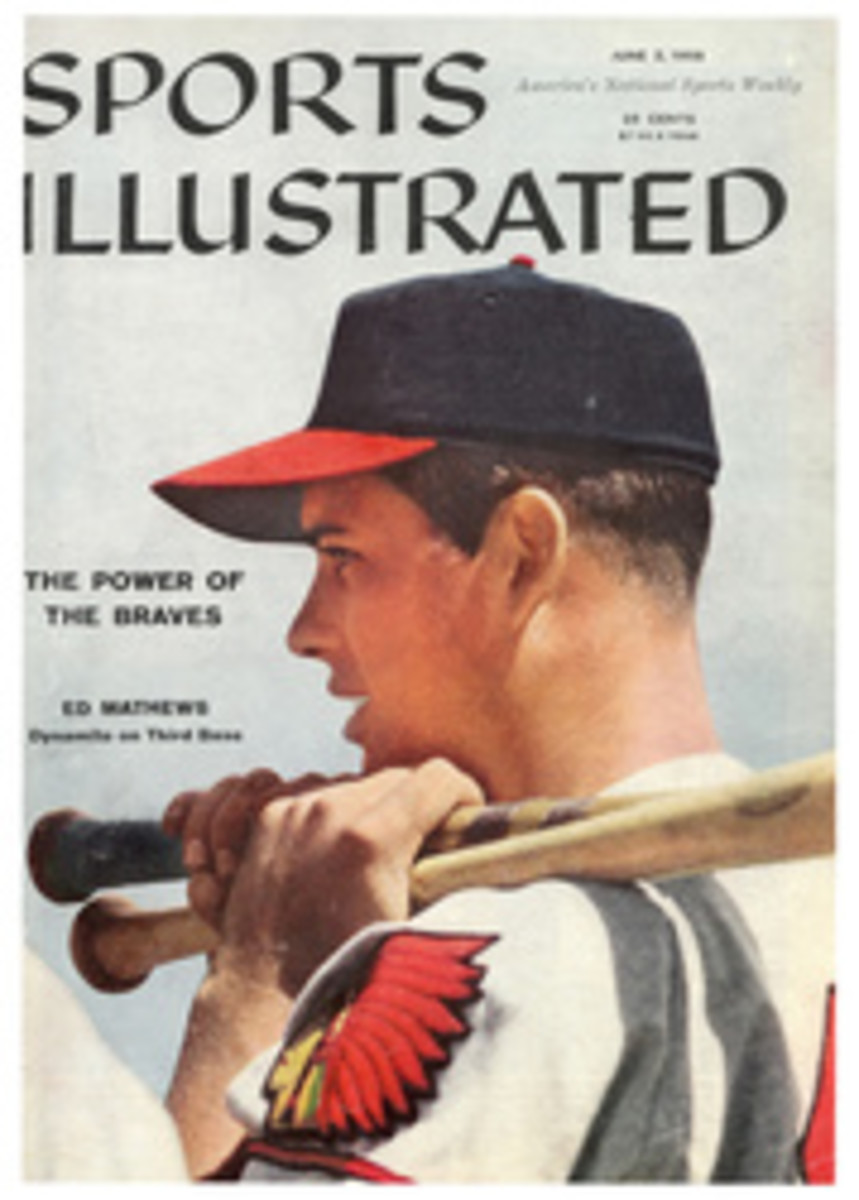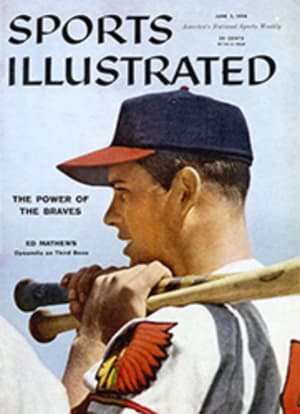
Half Nelson, half dedication
A startling phenomenon that takes place regularly on the otherwise up-and-down professional golf circuit (just as it did this spring at the urbane Masters, the raucous Las Vegas Tournament of Champions and the select Fort Worth Invitational), is that a 27-year-old pro named Kenneth Paul Venturi is almost always favored to win. It occurs despite the fact that this former public links golfer from San Francisco has yet to win a national event, or even a rich one, of any kind. In all likelihood he will also be a pretournament favorite at this month's U.S. Open in Tulsa. A few skeptics insist that Venturi earns this respect only because he is in the midst of a hot streak, but a careful look at his credentials seems to point out more valid reasons for his sudden success.
It was only two years ago that Venturi shouldered his way into national prominence as the unknown California amateur who almost won the 1956 Masters. After a year of relative obscurity he came bounding forth again in the summer of 1957 like a hungry dog. Within the short space of a year since then he has gobbled up five tournament titles, $45,000 in prize money and has almost always been in contention.
One veteran golfer reflected the composite opinion of his slightly alarmed fellow pros when he said recently of Venturi: "There's no doubt that the kid's really got great talent. He works hard to keep improving his game and in competition he prepares for each shot like a craftsman. Besides, his swing is so sound that it's gotten to the point where his bad shots aren't really bad. Perhaps it's too early to say this, but if the rest of us don't look sharp it'll be a case of Venturi against the field every week."
The 170-pound 6-footer with blue eyes and curly brown hair takes his position as golf's bright young man very seriously. He even dresses for the role to the extent of keeping to a conservative playing outfit of gray slacks and gray sweater, topped by a blazing white golf cap. Pretty well under control is the intense, high-strung temperament that lies like a coiled spring beneath his relatively calm exterior personality. This is the same emotional exuberance that triggered his public pop-off after the bitter 1956 Masters defeat and which has created a generally held belief that Venturi is brash and cocky. But it is also the same force that keeps him nailed to a constant search for perfection and therefore allows him a realistic approach to his success so far as a professional.
"When I turned pro," he said recently, "I set up a little plan for myself in which I figured to win one or two tournaments in the first six months. Well, I haven't been on the tour a year yet, really, and I've won five of them. So I'm a little ahead of schedule."
Few athletes have had a more thorough preparation for success than this single-minded competitor. Venturi's father Fred, now in charge of the pro shop at Harding Park golf course in San Francisco, is a low-handicap golfer and he started his son playing on the city's public courses at the age of 12 (score for his first round: 172). Eight years later the boy had won not only the San Francisco City championship but the California amateur as well and had picked up a fervent and avuncular patron in Eddie Lowery, the extremely successful Lincoln-Mercury dealer.
Venturi's success in West Coast tournaments got him named to the 1952 Americas Cup and 1953 Walker Cup teams and during this time came the step that made such a difference. Lowery introduced Venturi to Byron Nelson and arranged for the former great to pass on to the youngster, then 21, the carefully developed skills which had brought to Nelson the 1939 Open championship, as well as a pair of PGA and Masters titles. Nelson went to Seattle in August of 1952 to watch Venturi play in the National Amateur. If he liked what he saw he would undertake the project.
"I was beaten in the first round at Seattle by Arnold Blum," Venturi recalls, "and I was pretty discouraged. But afterward Nelson came up and said, 'Son, I've been watching you play and I'm willing to take you in hand.' Boy, I felt great."
With good reason. Nelson had always been a particular idol of Venturi's and was probably the only man whom Venturi would have permitted to make any changes in his game. He had first seen Nelson during the 1946 San Francisco Open and liked the way he played, liked his swing and the flight of the ball when he hit it. Once during this tournament, when Venturi was trying to get a camera shot of Nelson chipping to the fifth green, the great man saw him and called over: "Son, will you please put up that camera and back out of here?" The 14-year-old boy raced all the way home and burst into the house shrieking, "Mother, Byron Nelson talked to me, Byron Nelson talked to me." What more could any youngster ask of his hero?
FIVE FRUITFUL DAYS
After his first-round loss to Blum at Seattle, Venturi drove back to San Francisco with Nelson and underwent five days of intensive golf lessons. On the first day, it was agreed, Nelson would play 18 holes with his pupil and just observe without saying a word. Venturi shot a 66.
"In those days I was all for score as the true measure of whether or not you had played well," Venturi says. "After we had played our round and had gone to lunch, I figured there wasn't much Nelson could say about what I had done wrong.
" 'See you tomorrow morning at 9 o'clock sharp,' he said to me. 'There are seven or eight things I want to start working on right away.' "
During the next four days the young amateur's swing was carefully taken apart and put together on a new set of fundamentals. He and Nelson worked first on position, then timing and weight distribution. It was one of the most important weeks of Venturi's life, and what he learned then is still something Nelson and Venturi, for reasons of their own, have kept to themselves. Whatever it is, Venturi now will stand up to the ball in the Nelson manner, has all of his superb timing and today, among other things, is one of the best long-iron hitters in the game, just as Nelson was in his prime. Summing up briefly what he was taught Venturi says: "Nelson laid out the architectural plans and built the structure. I've put on the finishing touches."
Occasionally the pupil must return to his teacher for a few brisk refresher lessons. Venturi entered the Army in 1954 and played very little golf while in the service. When his tour of duty ended in October, 1955 his swing had fallen completely to pieces. A week with Nelson at Palm Springs and the swing was so well in tune that it almost won the Masters the following April.
HOT HAND GONE COLD?
After the severe letdown that followed his all-out effort, and subsequent failure to win the 1958 Masters championship, Venturi returned home for nine more days of refurbishing with Nelson. He claims now to be hitting the ball better than ever, but Venturi's failure to win a tournament since the Baton Rouge Open March 2 has prompted the belief in many observers that he had been playing a hot hand that has now gone cold. Venturi feels confident, however, that this is not the case with him and adds: "I guess a lot of players—not consciously, maybe—are afraid that their game will suddenly go. If it does, you might not get it back immediately, but if you're basically sound, it'll come back eventually. As your golf game improves you'll always have these gradual drops before each new advancement."
In competition Venturi draws large, if not affectionate, galleries. Somber and imperturbable as he plays his rounds, Venturi waits patiently for his star; greatness can be his for the earning, and he faithfully prepares to earn it. Whether this occurs or not, it will be fascinating to sit on the sidelines and see exactly what history does have in store for this talented and appealingly dedicated young man.
TWO PHOTOS
VENTURI'S SWING COMBINES GREAT HAND SPEED (LEFT), FINE BALANCE (RIGHT)

